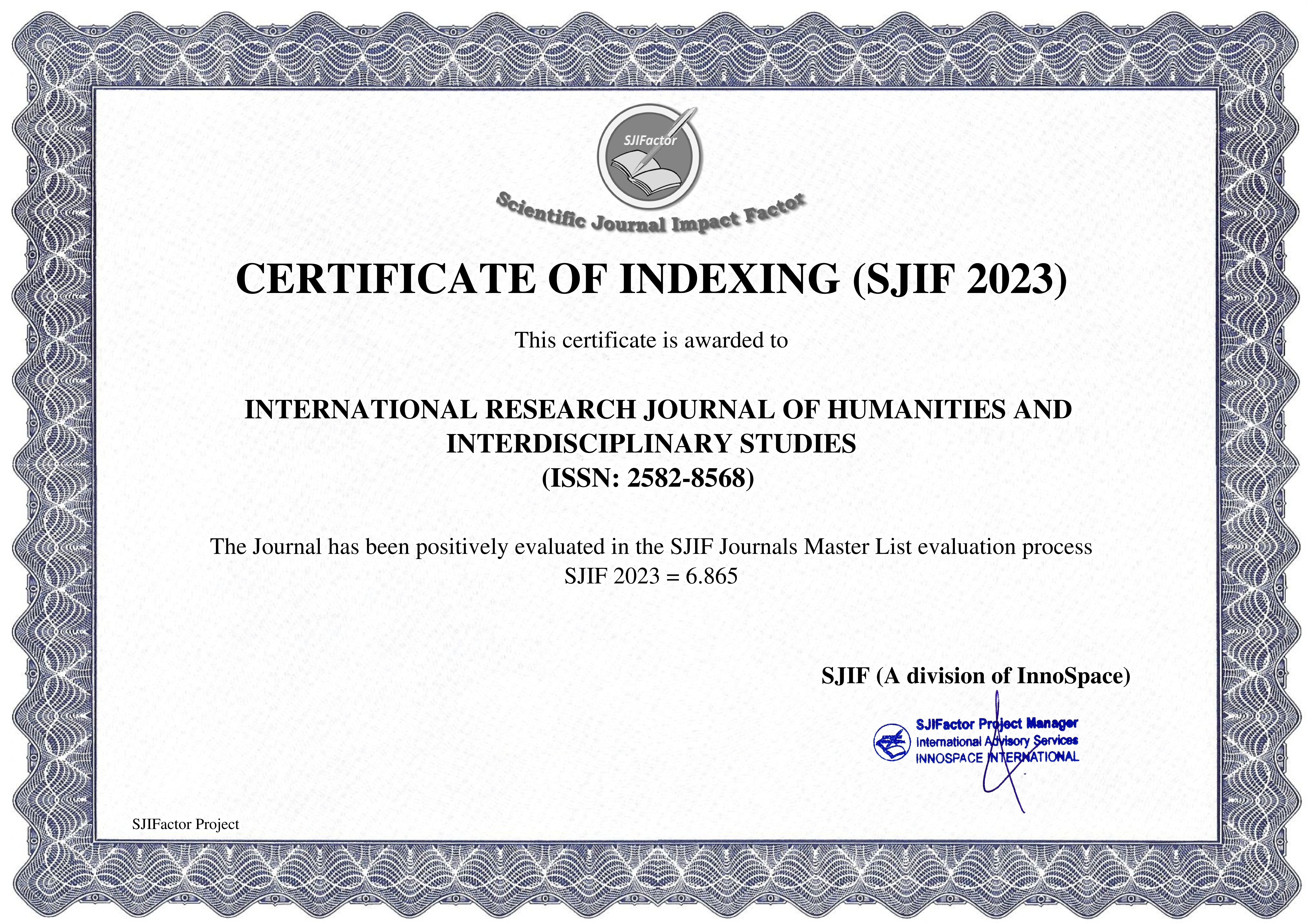Paper Details


Call For Papers
Volume 06, Issue 12
Frequency: 12 Issue per year
Paper Submission: Throughout the Month
Acceptance Notification: Within 2 days
Areas Covered: Multidisciplinary
Accepted Language: Multiple Languages
Journal Type: Online (e-Journal)
Announcement

Publish books with ISBN Number
- Edited Book
- Text Book
- Ph.D Thesis
- Conference Proceedings
ISSN Number:
2582-8568
Journal DOI No:
03.2021-11278686
Title:
Contribution of Agriculture in Indian Economy
Authors:
Cite this Article:
,
Contribution of Agriculture in Indian Economy, International Research Journal of Humanities and Interdisciplinary Studies (www.irjhis.com), ISSN : 2582-8568, Volume: 5, Issue: 8, Year: August 2024, Page No : 83-88,
Available at : http://irjhis.com/paper/IRJHIS2408010.pdf
Abstract:
The foundation of any economy is its agricultural sector, which supplies humanity's basic needs as well as the raw materials needed for industrialisation today. The agricultural sector is strategically important to a nation's process of economic growth. Its impact on the economic progress of both rich and developing nations has been substantial. The majority of people in India—roughly 67%—live in villages. Agriculture and associated activities are their main occupation. About sixteen percent (17%) of India's GDP and ten percent (10%) of its exports come from the agricultural sector. Approximately 60% of the workers in the nation is employed by it. More over 70% of Indians work in agriculture, making it the biggest and most significant economic sector.It implies that the output and production of agriculture contribute to the general economic development of the nations that are primarily agricultural. Moreover, with less capital input, agricultural productivity may be increased more quickly. After independence, India's agricultural sector became increasingly important as the country realised that growth in this sector was necessary for the country's economy to expand. Thus, the development of the agriculture sector was one of the primary goals of India's first five-year plan, which was centred on agricultural development. The nodal agency in charge of the growth of India's agriculture industry is the Department of Agriculture and Cooperation, which is a division of the Ministry of Agriculture. The Indian government implemented a number of measures to boost agricultural output, and the output of food grains grew as a result. For the majority of Indian families, agriculture is the primary source of income. India is the second-largest country in terms of overall arable land area, with over 60% of its land area being arable.
Keywords:
Agriculture development, Economy, Occupation, GDP and Agriculture output.
Publication Details:
Published Paper ID: IRJHIS2408010
Registration ID: 21585
Published In: Volume: 5, Issue: 8, Year: August 2024
Page No: 83-88
ISSN Number: 2582-8568
Download Full Paper: Click Here
Article Preview:





